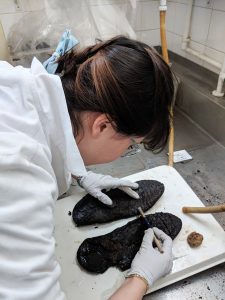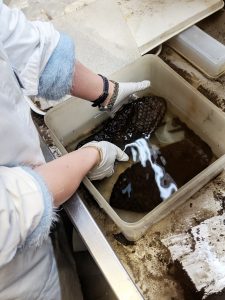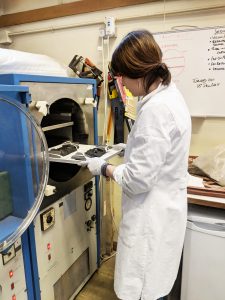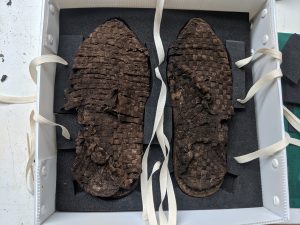At St James’s Gardens, Euston, where we are carrying out archaeological excavations on behalf of CSJV for HS2 Ltd, our conservators are collaborating closely with archaeologists to conserve vulnerable finds, making regular on-site visits. We are very lucky that the site’s wet, low oxygen ground conditions provide prime conditions for the preservation of organic material such as textiles, leather and wood, which are relatively rare in the archaeological record. However, once removed from the ground, the environment change triggers the deterioration process and can lead to irreparable changes in objects, and in extreme cases, to their complete disintegration. In this blog, conservator Lucie gives us a glimpse into the important work she has been doing to stem this process and conserve two of the many fascinating objects being found at St James’s – a pair of slippers…
Back in January, a pair of slippers was retrieved from a lead coffin believed to have belonged to a civil servant with the British East India Company who lived in Bombay (now Mumbai) for over twenty years, at a time when the Company established and expanded its rule over parts of the Indian subcontinent. He returned to England in c.1810 and lived his final years in retirement at a house in Fitzroy Square, St Pancras until his death, aged 70, in April 1825. The slippers were found placed on his lower legs, soles down, with toes facing toward the head.
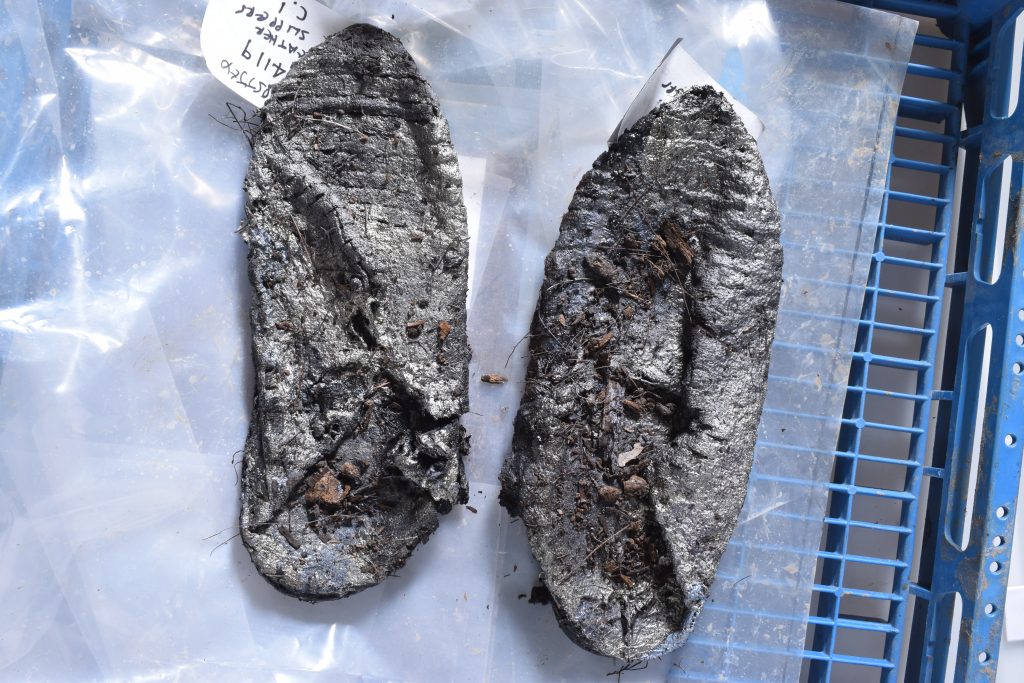
The slippers before conservation
After a heads-up from the archaeologists on site, the slippers were carefully lifted and brought to the conservation lab. Using the microscope, we were able to tell that they had leather soles and a woven textile upper. If left to dry in the open air, the leather would shrink, warp and completely lose its shape, causing irreparable damage to the object and possibly destroying information that could have been of use to specialists. Specific conservation treatment was required to stabilise the object and preserve its most features:
